SNVSA92D September 2015 – June 2018 LMZ36002
PRODUCTION DATA.
- 1 Features
- 2 Applications
- 3 Description
- 4 Revision History
- 5 Pin Configuration and Functions
- 6 Specifications
-
7 Detailed Description
- 7.1 Overview
- 7.2 Functional Block Diagram
- 7.3
Feature Description
- 7.3.1 Adjusting the Output Voltage
- 7.3.2 Switching Frequency (RT)
- 7.3.3 Recommended Operating Range
- 7.3.4 Synchronization (CLK)
- 7.3.5 Output Capacitor Selection
- 7.3.6 VERSA-COMP Pin Configurations
- 7.3.7 Input Capacitor Selection
- 7.3.8 Output On/Off Inhibit (INH/UVLO)
- 7.3.9 Under Voltage Lockout (UVLO)
- 7.3.10 Remote Sense
- 7.3.11 VBSEL
- 7.3.12 Soft-Start (SS/TR)
- 7.3.13 Power Good (PWRGD) and Pull-up (PWRGD_PU)
- 7.3.14 Overcurrent Protection
- 7.3.15 Thermal Shutdown
- 7.4 Device Functional Modes
- 8 Application and Implementation
- 9 Power Supply Recommendations
- 10Layout
- 11Device and Documentation Support
- 12Mechanical, Packaging, and Orderable Information
Package Options
Mechanical Data (Package|Pins)
- RVQ|43
Thermal pad, mechanical data (Package|Pins)
Orderable Information
6.10 Typical Characteristics (Thermal Derating)
The temperature derating curves represent the conditions at which internal components are at or below the manufacturer's maximum operating temperatures. Derating limits apply to devices soldered directly to a 50 mm × 100 mm, 4-layer PCB with 2 oz. copper.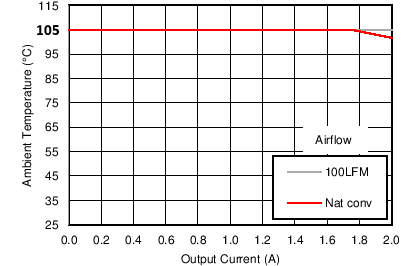
1.
Figure 19. Safe Operating Area | PVIN = 24 V | VOUT = 3.3 V |
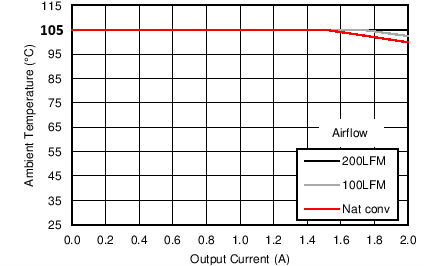
1.
Figure 21. Safe Operating Area | PVIN = 24 V | VOUT = 5 V |
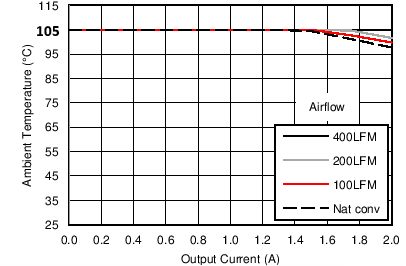
1.
Figure 23. Safe Operating Area | PVIN = 24 V | VOUT = 7.5 V |
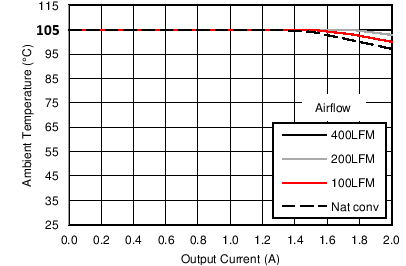
1.
Figure 20. Safe Operating Area | PVIN = 48 V | VOUT = 3.3 V |
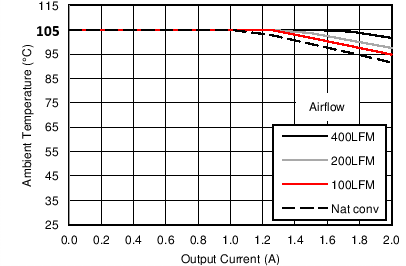
1.
Figure 22. Safe Operating Area | PVIN = 48 V | VOUT = 5 V |
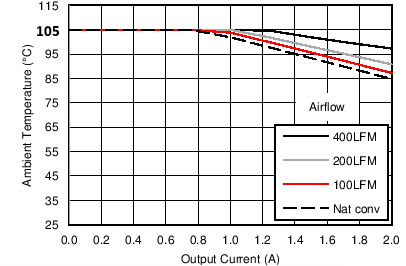
1.
Figure 24. Safe Operating Area | PVIN = 48 V | VOUT = 7.5 V |